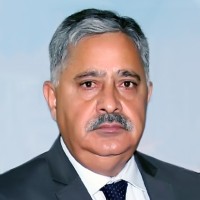
Prof. Ashok Aima
The power of the nation is judged by the quality of its people. The determinants of quality of people include various factors viz attitudinal, value system, belief system, social dynamics, cultural progress, spiritual and emotional domains of human character. Every age has its privileged mode of education that has evolved over a period of time. It would be commonplace to state that 21ST century is altogether different from its preceding counterparts, for all centuries or periods are fundamentally alike, with the difference that the pace of change and the way society manages its conditions determine the character of its age.
19TH century was the century of colonization and clash of civilizations or knowledge systems, or to say it was just confluence of cultures. The 20TH century was the century of post/modernization and large scale projectization of violence. The 21ST century has the distinction of being named as ‘Knowledge Century’. But it should not be construed that other centuries were not knowledge societies because no society can manage itself without knowledge. However, the difference in the present century is that processing of knowledge has become faster than ever before. The exponential changes made by science and technology in the form of ICT and in computational abilities, have contributed enormously to the discovery and study of new cultures and their alternative modes of knowledge(s).
These determinants are largely harnessed and modelled through educational agencies and institutions having been created and shaped through the appropriate policies and practices. Dr Kothari rightly remarked that the quality of nation is being shaped in her classroom. This statement has a clear connotation that vivid reflections of a Nation’s progress are judged by the quality and character of the schools. The National Education Policy (2020) focuses all major makeovers of various domains of the education sector. The restructuring as proposed in the policy document from 10 + 2 + 3 pattern to 5 +3+3+ 4 structure would undoubtedly facilitate the path of coordinating the desirable linkages among elementary, secondary and higher education sectors of education.
In the new NEP decided to include children 3 to 8 years in one group, next group will be the children 8 to 11 years appropriate to the classes 3RD to 5TH and above the age of 14 years children will be in the Secondary class and subsequently to the higher education sector afterwards.
This restructuring of the education of the country will undoubtedly affect the quality of different levels. This will ensure well defined linkages in various level and sublevels of education in holistic perspectives.
Another major landmark move in this policy is providing education in mother tongue up to at least class 5TH, which would help to encounter the problem of at elementary level this will directly benefit the less privileged children of the country. Promotion of Indian culture and languages particularly the Sanskrit language is another landmark reflected in this New Policy on Education. The curriculum and pedagogy of our institutions must develop a deep sense of respect towards the fundamental duties and Constitutional values, bonding with one’s country, and a conscious awareness of one’s roles and responsibilities in a changing world. New policy has also taken the cognizance of erroneous system of assessment and examination and therefore whiles multiple chances to the learner and gets the grades accumulated through National Academic Credit Bank.
This will facilitate the learning process to be more productive and outcome based whereby the learner would get optimal benefit out of his invested time, efforts and money while getting engaged in any educative process.This move will also help in maintaining the Gross Enrolment Ratio (GER) of the country up to a desirable level with a balance between qualitative and quantitative parameters. The creation of a gender inclusion fund will also help the less privileged girls from humble backgrounds have their bright future leading to empowerment.
The teacher education program has got a new direction in this policy by providing multidisciplinary inputs in Existing structure through 4 years Integrated Teacher Education Program (ITEP) wherein the aspirants would join teaching profession by choice not by chance. The extensive use of technology in teaching and learning, removing language barriers, increasing access for Divyang students, and educational planning and management is another flagship character of this policy . All such softwares will be available in all major Indian languages and will be accessible to a wide range of users including students in remote areas and Divyang students.
The creation of An autonomous body NETF, to provide a platform for the free exchange of ideas on the use of technology to enhance learning, assessment, planning, administration, and so on, both for school and higher education is a farsighted initiative. It would provide independent evidence-based advice to Central and State Government agencies on technology-based interventions; build intellectual and institutional capacities in educational technology; envision strategic thrust areas in this domain; and articulate new directions for research and innovation backed by -Artificial Intelligence (AI) 3D/7D Virtual Reality. Accordingly for Content creation, digital repository, and dissemination a digital repository of content including creation of coursework, learning Games & Simulations, Augmented Reality and Virtual Reality will be developed.
Various efforts have to be initiated for online assessment and examinations- designing and implementation of online assessment frameworks encompassing competencies, portfolio, rubrics, standardized assessments, and assessment analytics. The efforts are also needed for need based adoption of Blended models of learning whereby different effective models of blended learning need to be identified for appropriate replication for different subjects.
By enhancing allocation from 1.17 to 6 percent of GDP demonstrates the priority being given to education for developing quality human capital for nation building endeavours. In addition to one-time expenditures, primarily related to infrastructure and resources, this Policy identifies the following key long-term thrust areas for financing to cultivate an education system- universal provisioning of quality early childhood care education; ensuring foundational literacy and numeracy; providing adequate and appropriate resourcing of school complexes/clusters; providing food and nutrition (breakfast and midday meals); investing in teacher education and continuing professional development of teachers; revamping colleges and universities to foster excellence; cultivating research; extensive use of technology and online education. Prioritization will be important in ensuring optimal sequencing of policy points, and that the most critical and urgent actions are taken up first, thereby enabling a strong base. Comprehensiveness in implementation will be key; as this Policy is interconnected and holistic, only a full-fledged implementation, and not a piecemeal one, will ensure that the desired objectives are achieved. Careful analysis and review of the linkages including early investment in some of the specific actions (such as the setting up of early childhood care and education infrastructure) that will be imperative for ensuring a strong base and a smooth progression for all subsequent programmes and actions.
The author is Vice-Chancellor at Central University of Jammu.
















